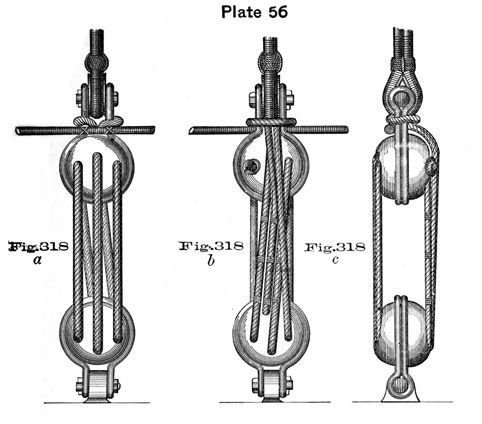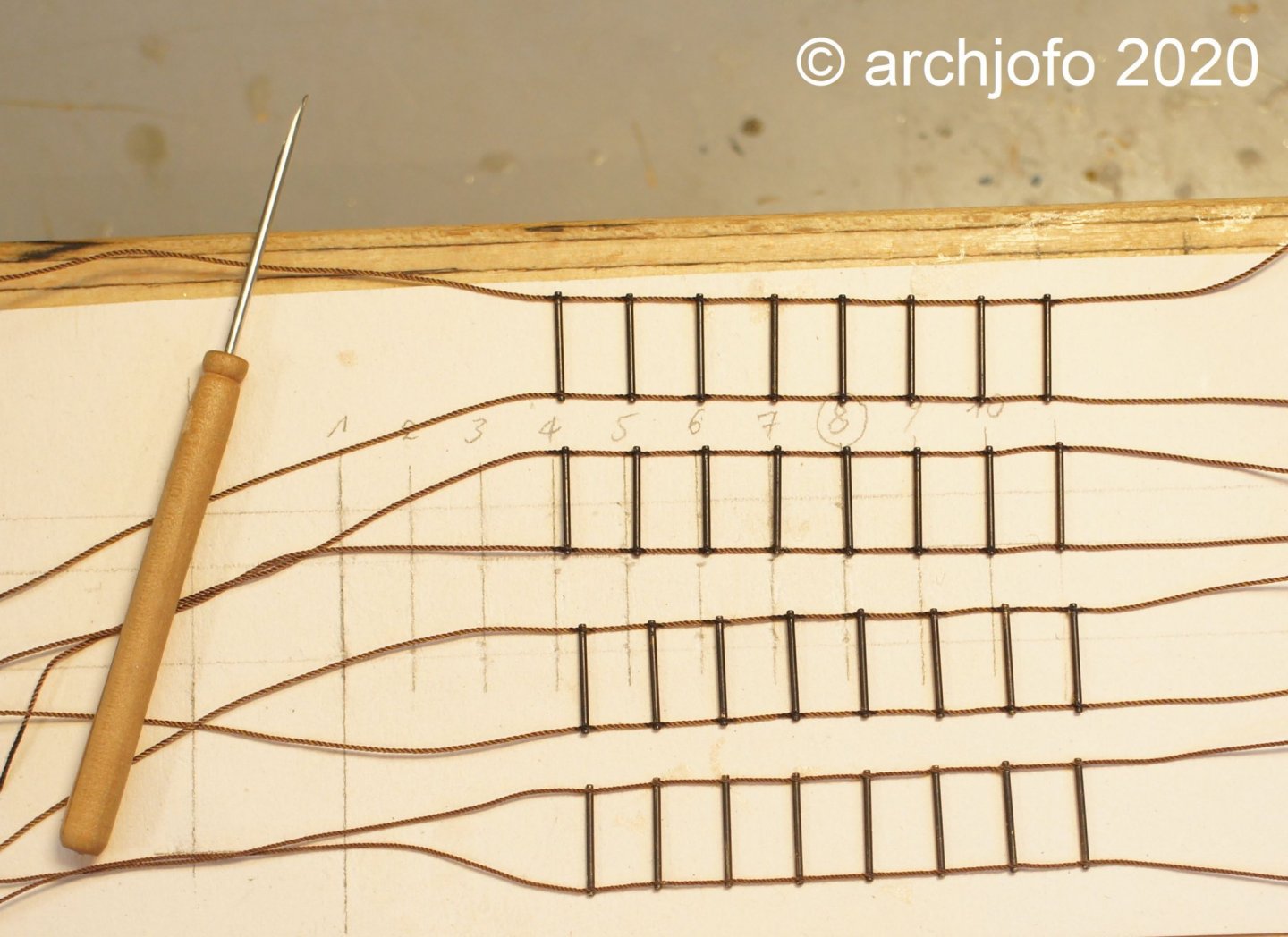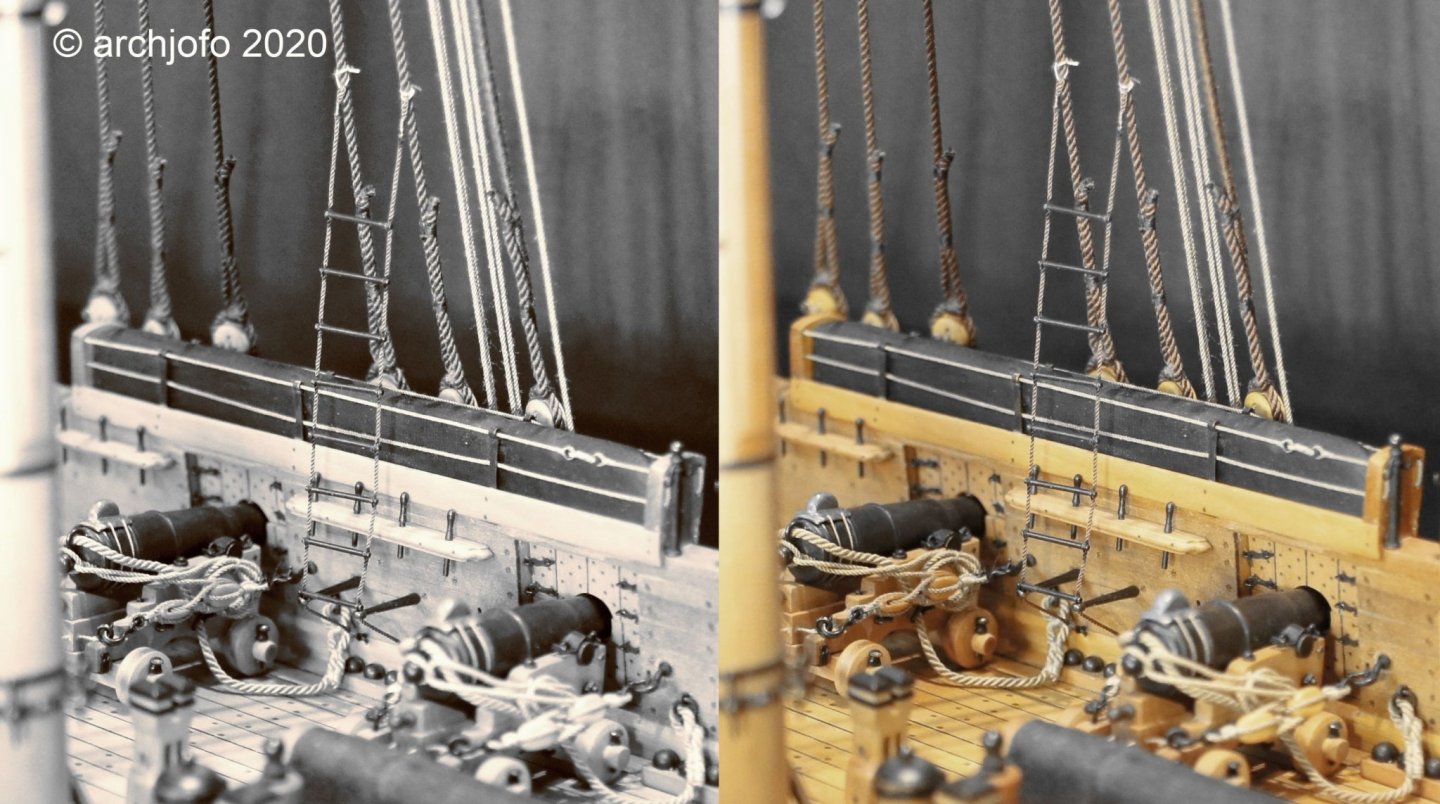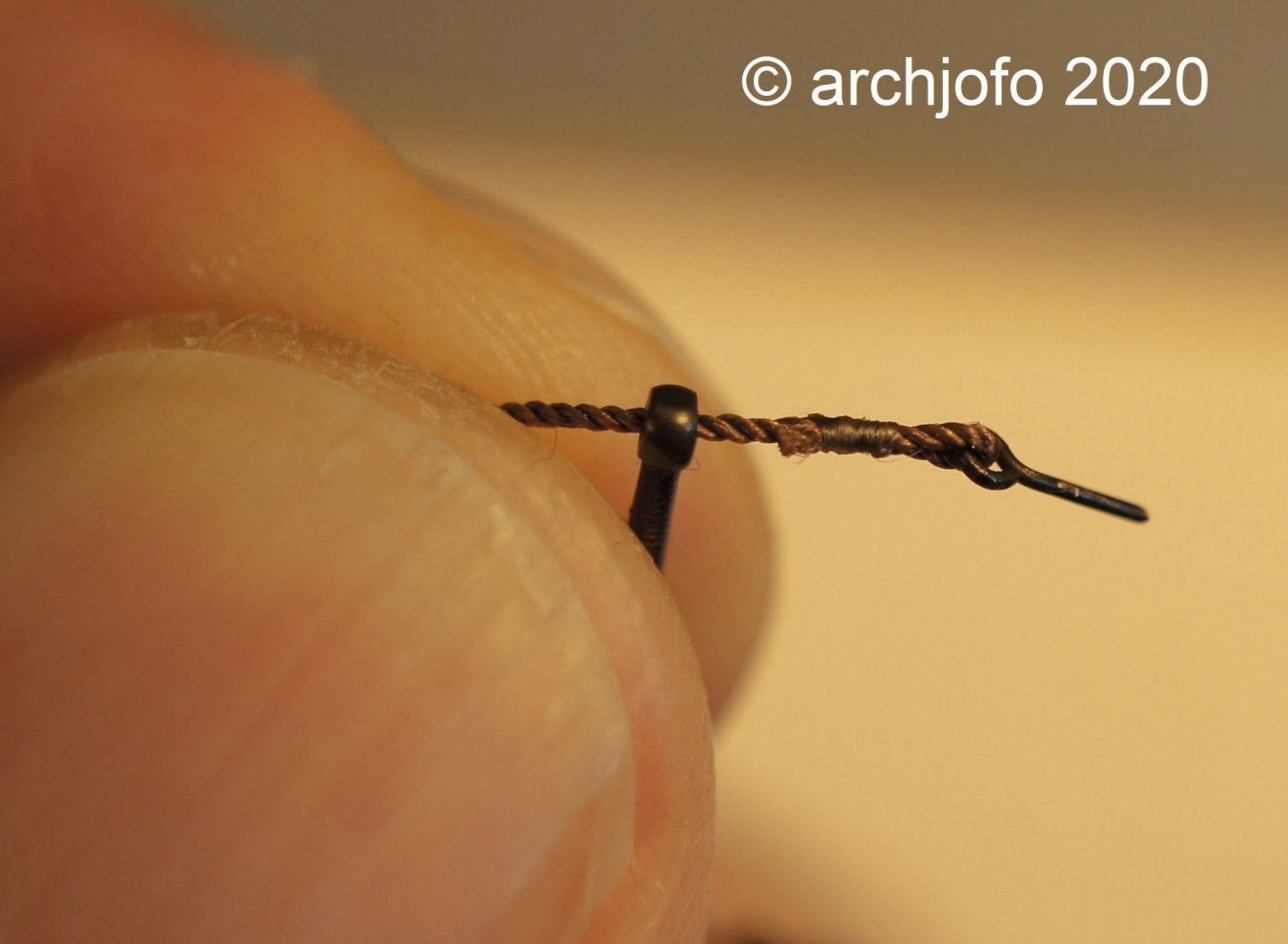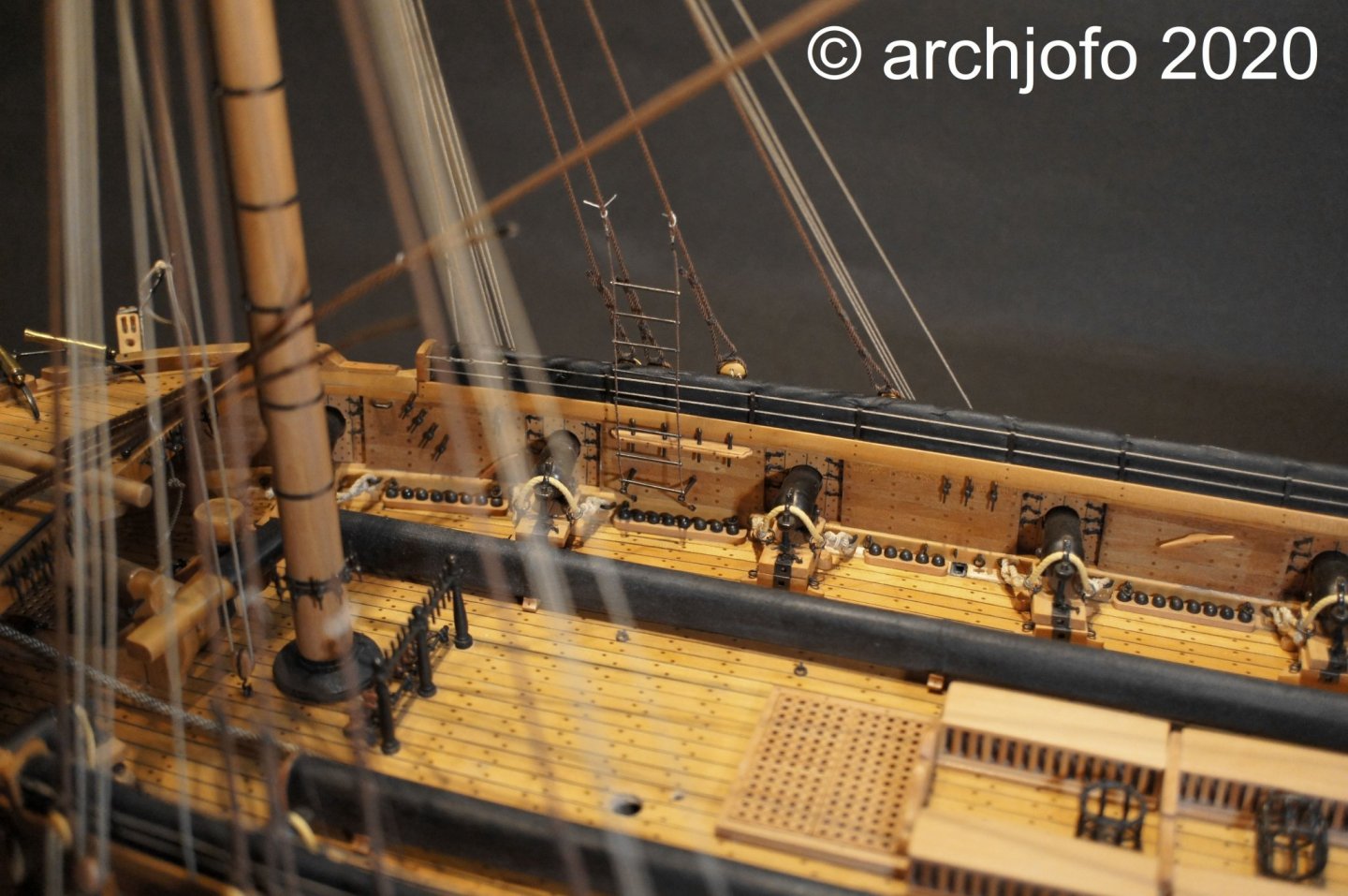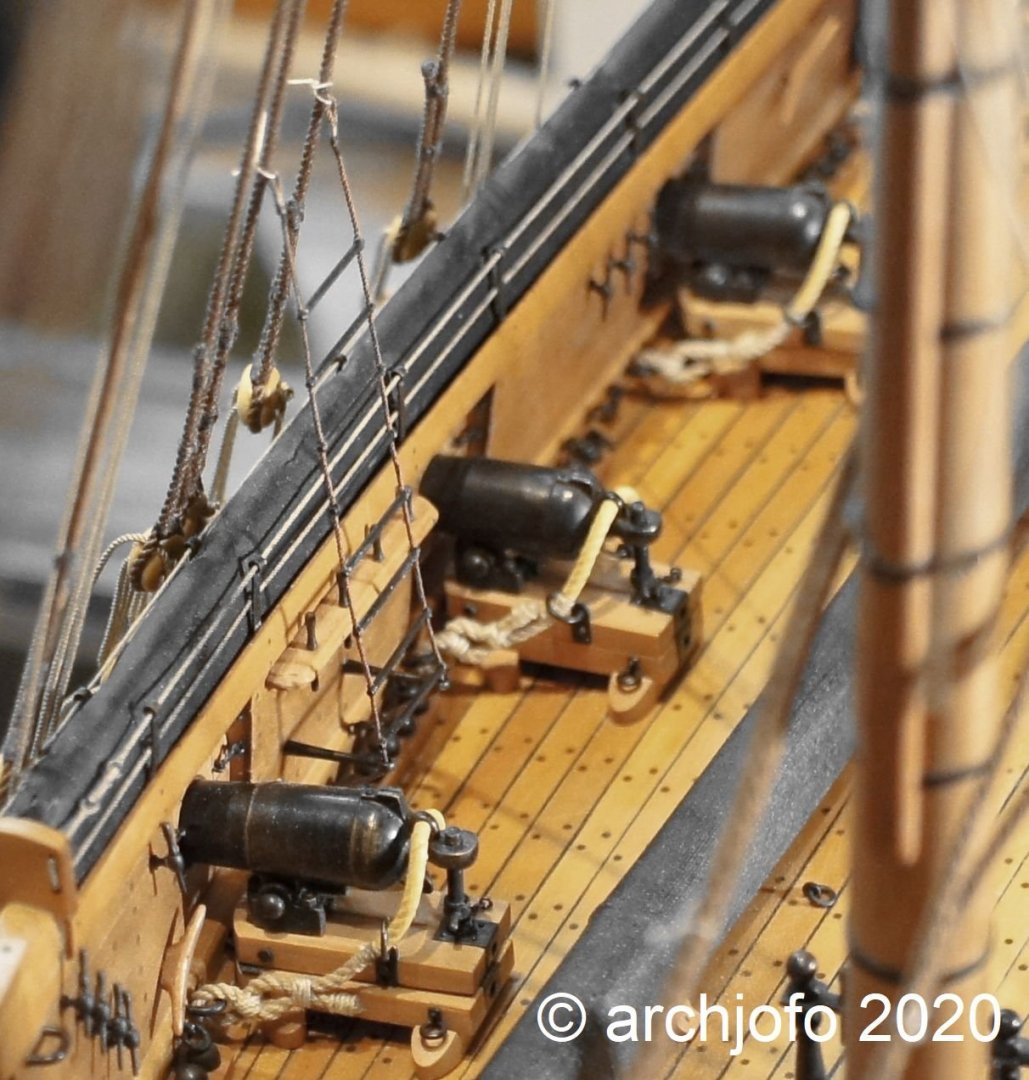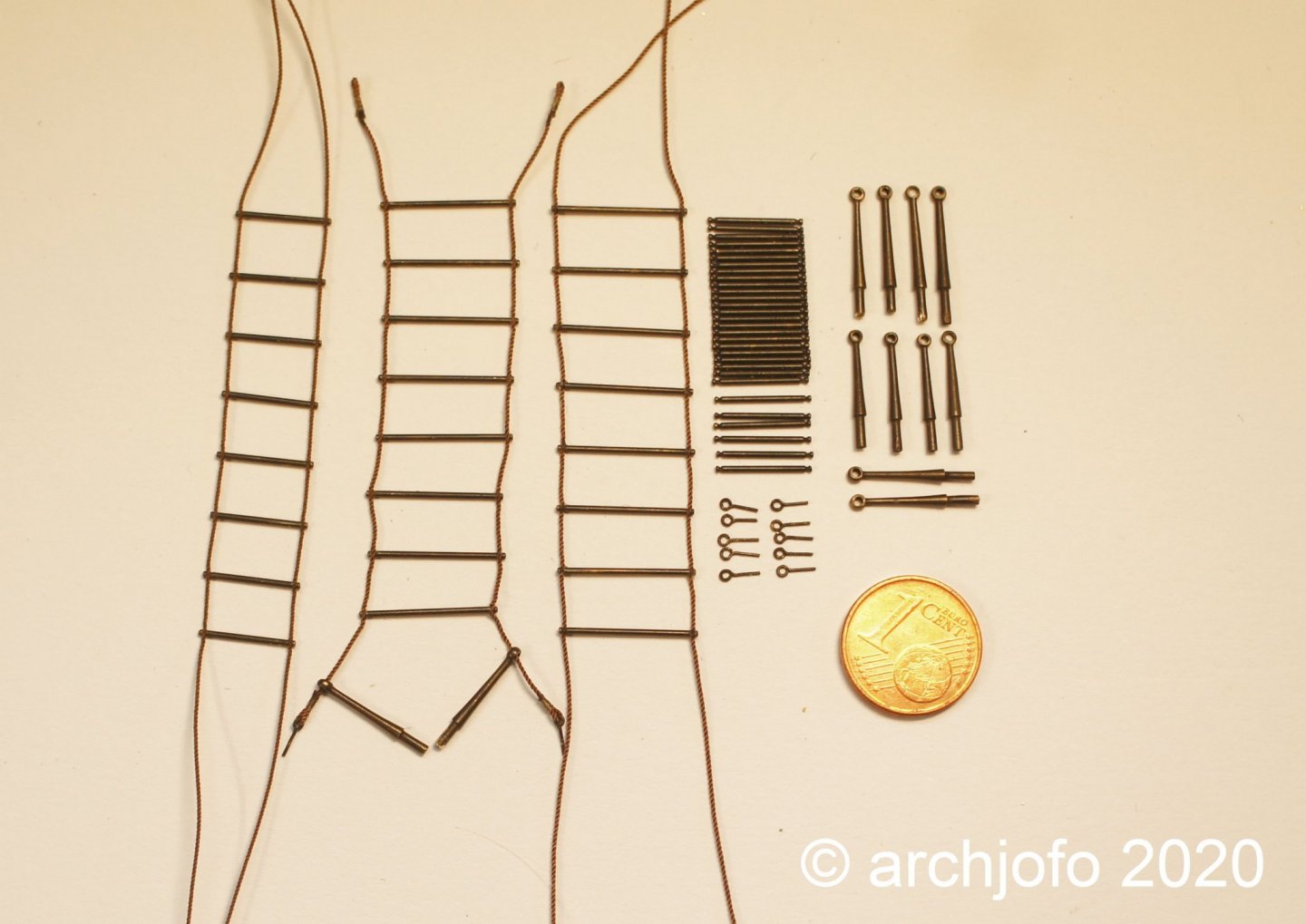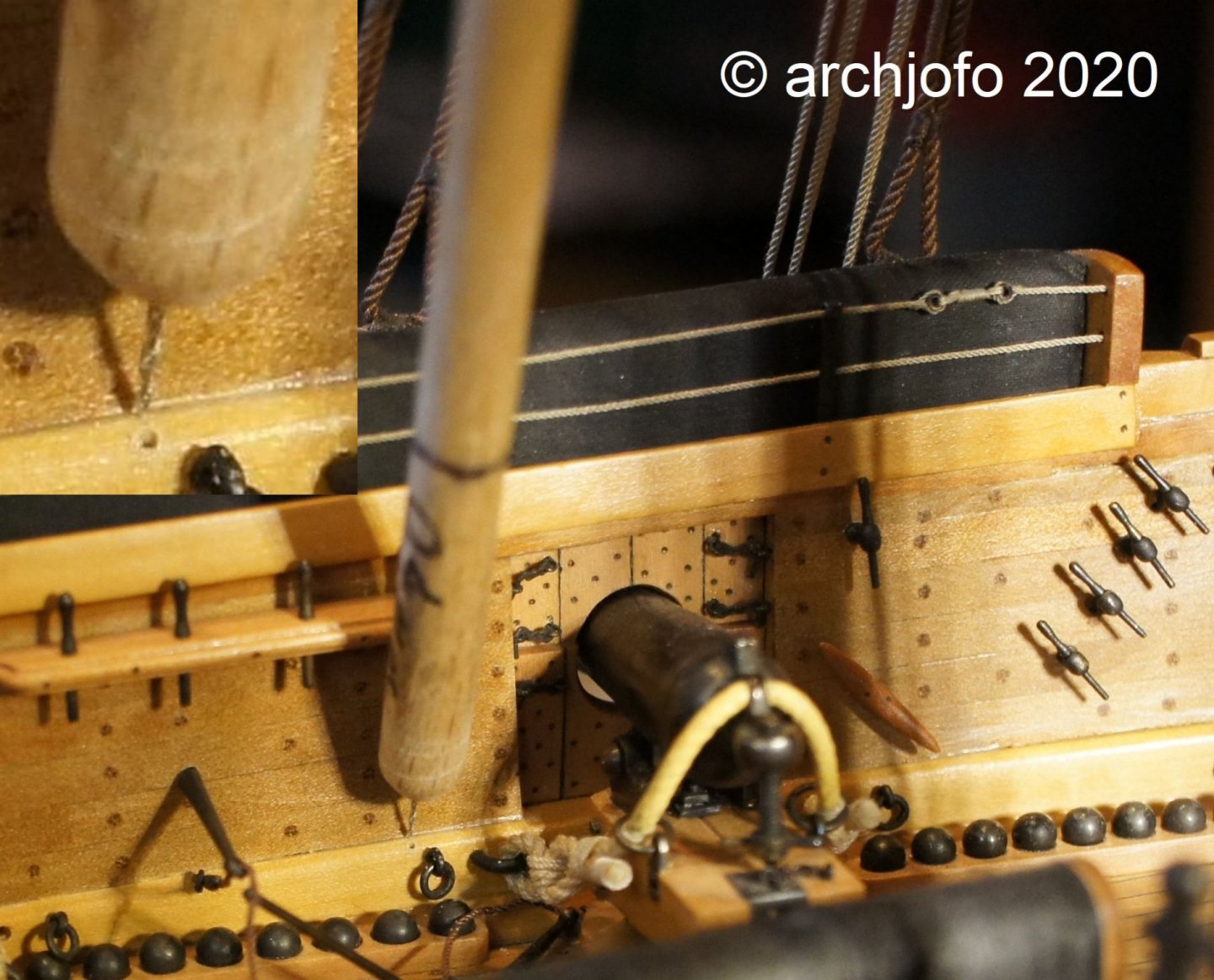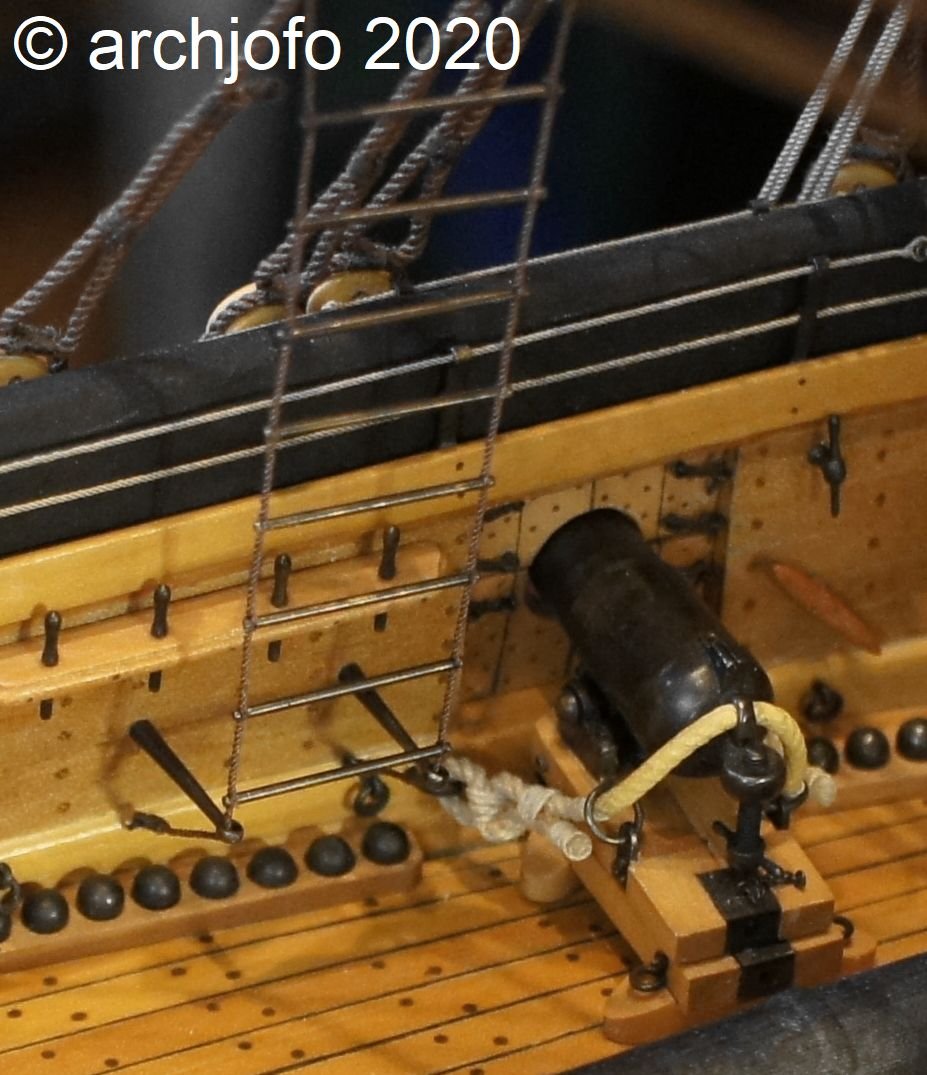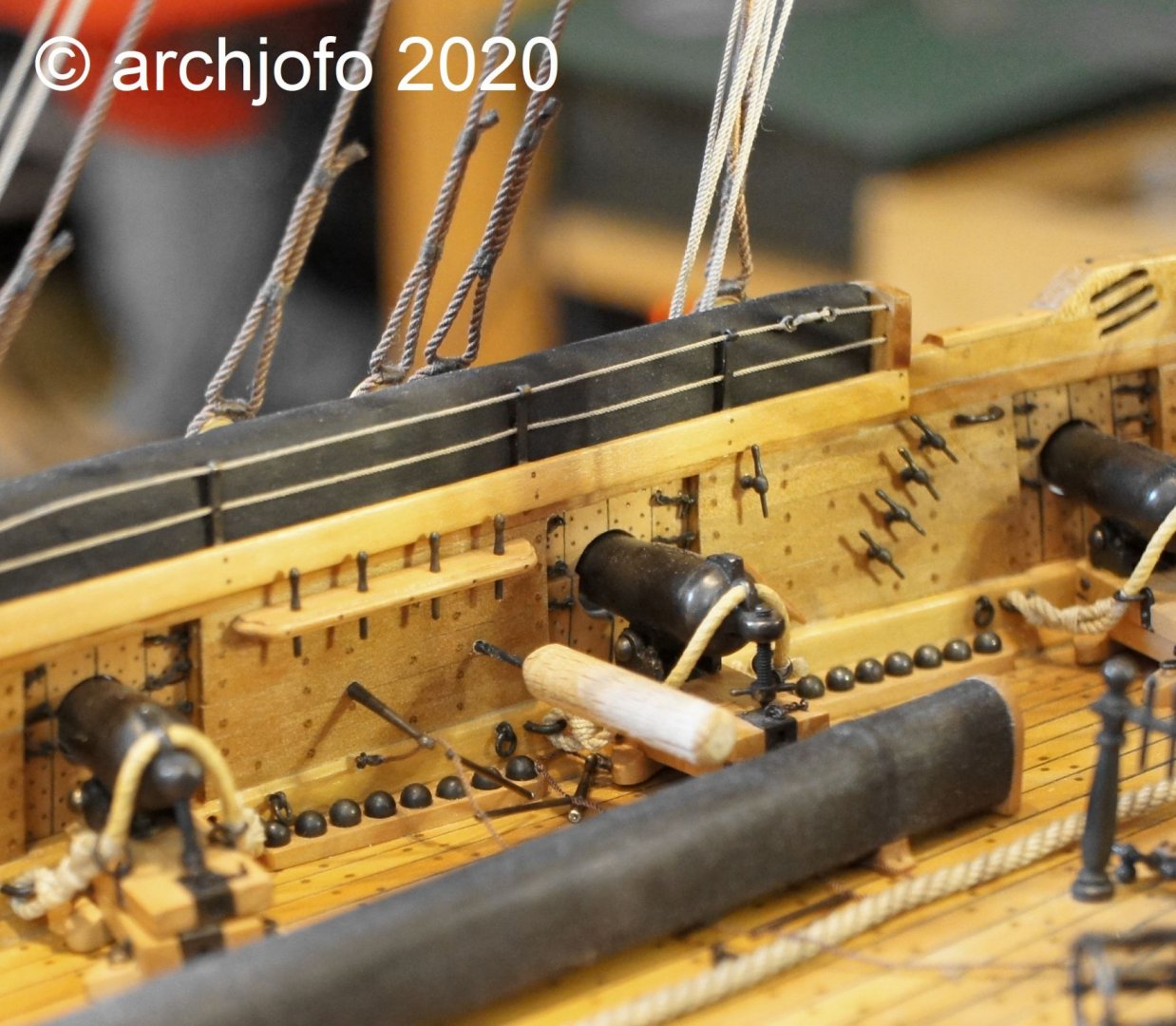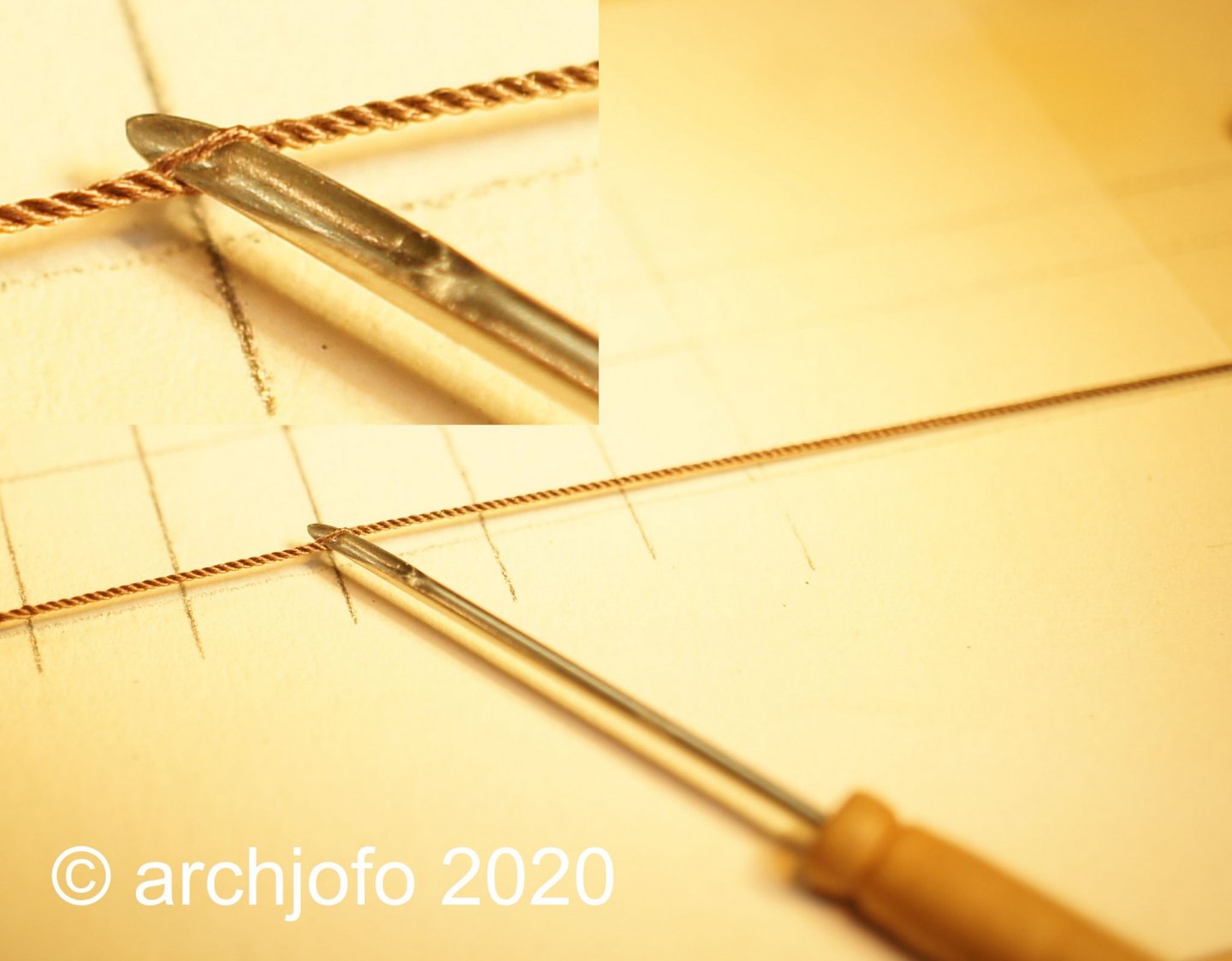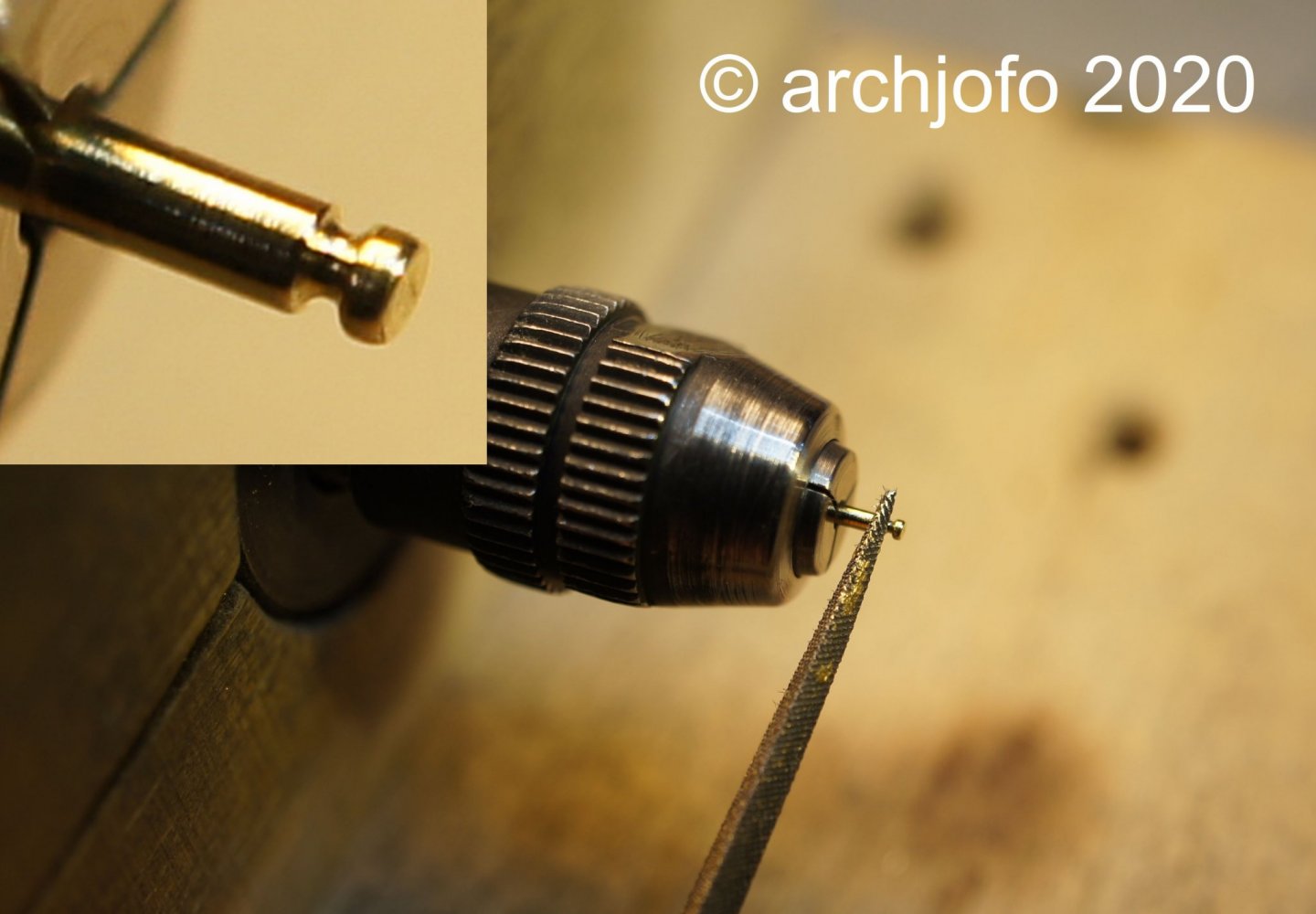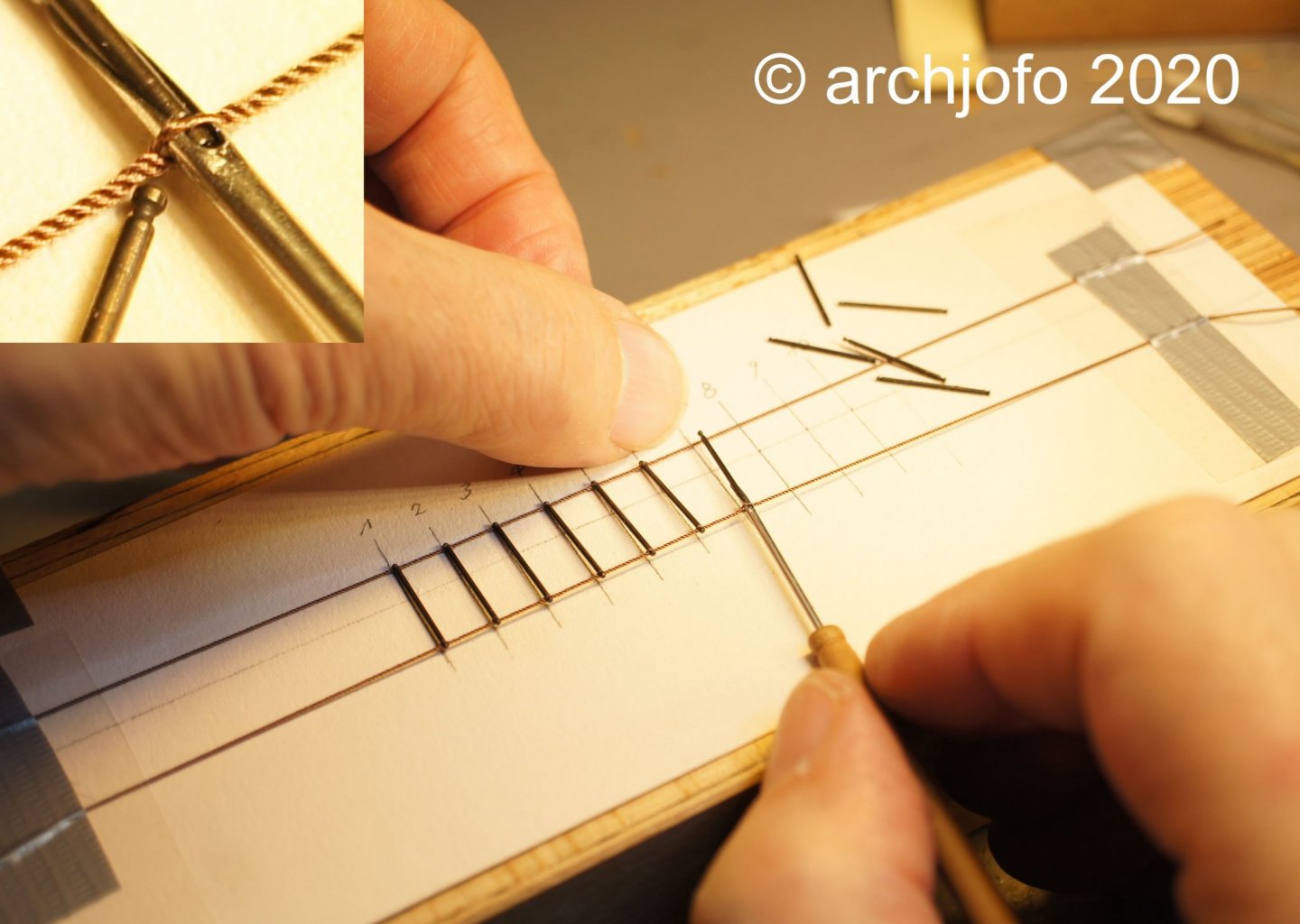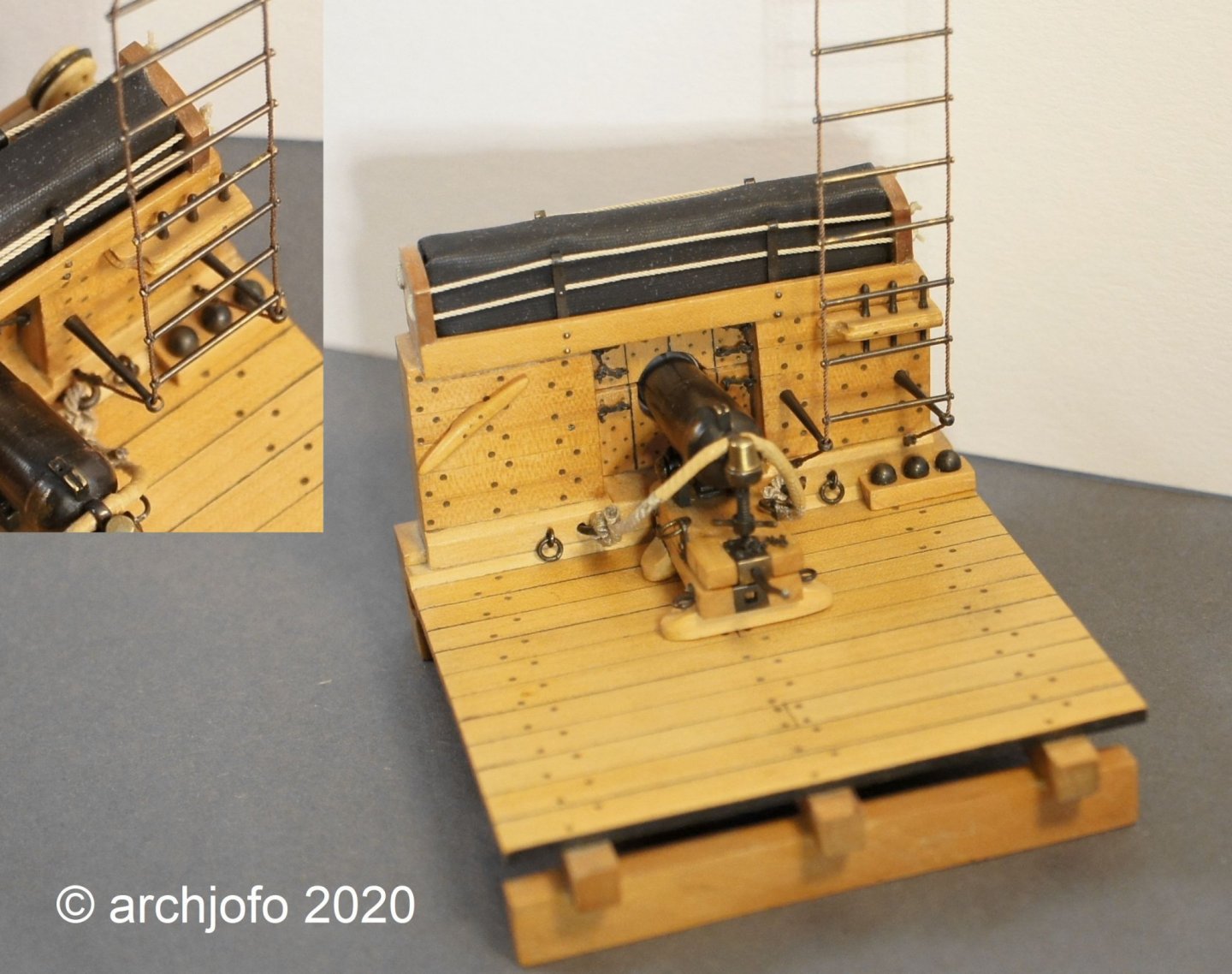-
Posts
1,495 -
Joined
-
Last visited
Content Type
Profiles
Forums
Gallery
Events
Everything posted by archjofo
-
An admirable job. Especially remarkable is the scale in which this level of detail has been executed.
-
Hello, I'm glad you're still interested in my report. Thank you very much for that. The last guide blocks were attached to the inside of the bulwark in the waterway. In total I have now made 43 blocks (single, double and triple blocks). In addition a picture of the front area of the battery deck: Now in the next step I can attach the ratelines as soon as I have a decision to secure the lanyards.
-
Hi, to my question of the lanyards for the dead eyes as described in the last post I found another picture. This shows the lanyards of Le Rivoli from 1807. Here is also to see this method of securing the lanyards. Is there really no one who can give me more information about this? Excuse me, but I don't have a higher-resolution image. I hope you can see it.
-
Hello Friends, since about 6 months the shrouds are set, but I have not yet lashed the lanyards. So I think the shrouds had enough time to stretch, because I have retightened the taljereeps from time to time. Before I can attach the ratlines, I have to tighten the shrouds properly and secure the lanyards. In this respect it has to be clarified how to secure the taljereep correctly after the shroud rope has been set. There were different methods for this. However, in many beautiful ship models this detail is often not correctly reproduced and thus impairs the overall impression. A common method is to secure the taljereep as shown in the following drawing: Source: Rigging Period Ship Models, Lennarth Petersson However, a close look at illustrations of contemporary French ship models at the beginning of the 19th century, including Le Rivoli and La Créole (see detail), reveals that the lanyards was inserted from behind between the deadeye and the shroud and wrapped around the shroud twice in the direction of the bow and once in the direction of the stern. What was done with the end of the taljereep cannot be seen on any of the pictures available to me. Source: Rigging Period Ship Models, Lennarth Petersson However, a close look at illustrations of contemporary French ship models at the beginning of the 19th century, including Le Rivoli and La Créole (see detail), reveals that the lanyards was inserted from behind between the deadeye and the shroud and wrapped around the shroud twice in the direction of the bow and once in the direction of the stern. What was done with the end of the taljereep cannot be seen on any of the pictures available to me. Source: Musée de la Marine Paris - La Crèole After a long search in relevant literature I came across the following picture. This is a more modern way of rigging, but the same principle. The figure Fig. 318 b shows the back of the deadeyes and one can clearly see that the free end of the lanyard was connected to itself by bindings. So I think it is not far off to conclude that the French could have secured the lanyards in this way at the beginning of the 19th century. This could also explain the execution of the Parisian and other contemporary models. Source: Seamanship, S. B. Luce, 1891 At my model stand, with which I have carried out experiments on the ratlines so far, I compared the well-known and the method for securing the taljereeps mentioned above (unfortunately one turn too many). Before I decide on an execution method, I would be grateful for your expert opinions. See you soon ...
-
Hello Micheal, hello Mark, thanks for your kind comments. Also thanks to all for the LIKES. The equipment of the fore shrouds with the ropes ladders on the model has been completed in the meantime. The final fixing of the carrier ropes to the shrouds will be done when the ratlines are attached. In this respect, adjustments are still possible, if necessary. It continues with an update:
-
@Dowmer Thanks for the nice comment. The surface treatment of the wood I use this Product: LINK In Germany it is called "Ballenmattierung" because is applied it with a lint-free Cloth. When using glue, the material always matters. For wood, I usually use white glue (German product: Ponal) and for gluing eyebolts, for example, I use cyanoacrylate.
-
@FriedClams Hi Gary, you visited my construction report for a French corvette today. In this respect, I took this as a reason to pay a return visit. Now I know what I've missed so far. You build a fantastically good model, very clean, precise and extremely realistic. I'm excited.
-
@kees de mol These ships are not my specialty, but you build an excellent model and it deserves recognition. The construction method for the ship's hull is remarkable and it looks great with the iron plates and rivets.
- 193 replies
-
- wilhelmina vii
- fishing
-
(and 1 more)
Tagged with:
-
Hello, Michael, you show excellent work with wood. You might think this is the construction of a ship on a scale of 1:1. I also admire your clean and accurate processing of the materials. Is that the model of a railway in the background?
- 2,207 replies
About us
Modelshipworld - Advancing Ship Modeling through Research
SSL Secured
Your security is important for us so this Website is SSL-Secured
NRG Mailing Address
Nautical Research Guild
237 South Lincoln Street
Westmont IL, 60559-1917
Model Ship World ® and the MSW logo are Registered Trademarks, and belong to the Nautical Research Guild (United States Patent and Trademark Office: No. 6,929,264 & No. 6,929,274, registered Dec. 20, 2022)
Helpful Links
About the NRG
If you enjoy building ship models that are historically accurate as well as beautiful, then The Nautical Research Guild (NRG) is just right for you.
The Guild is a non-profit educational organization whose mission is to “Advance Ship Modeling Through Research”. We provide support to our members in their efforts to raise the quality of their model ships.
The Nautical Research Guild has published our world-renowned quarterly magazine, The Nautical Research Journal, since 1955. The pages of the Journal are full of articles by accomplished ship modelers who show you how they create those exquisite details on their models, and by maritime historians who show you the correct details to build. The Journal is available in both print and digital editions. Go to the NRG web site (www.thenrg.org) to download a complimentary digital copy of the Journal. The NRG also publishes plan sets, books and compilations of back issues of the Journal and the former Ships in Scale and Model Ship Builder magazines.


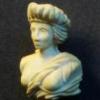

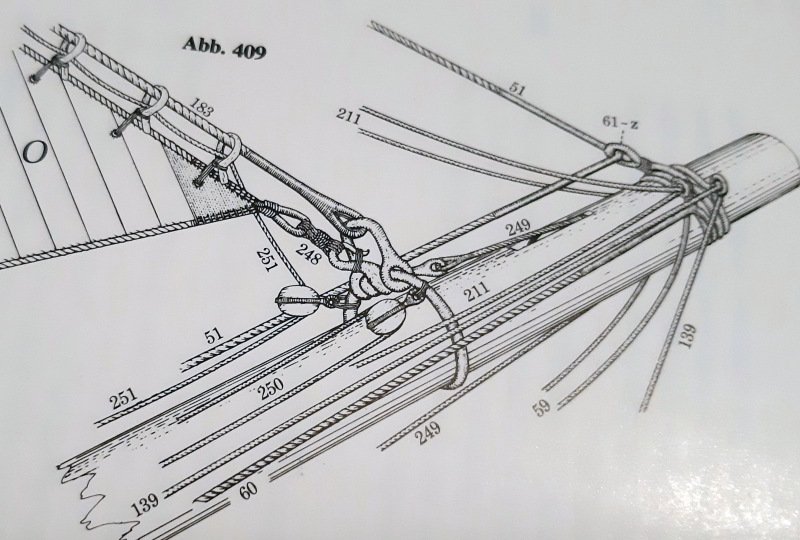
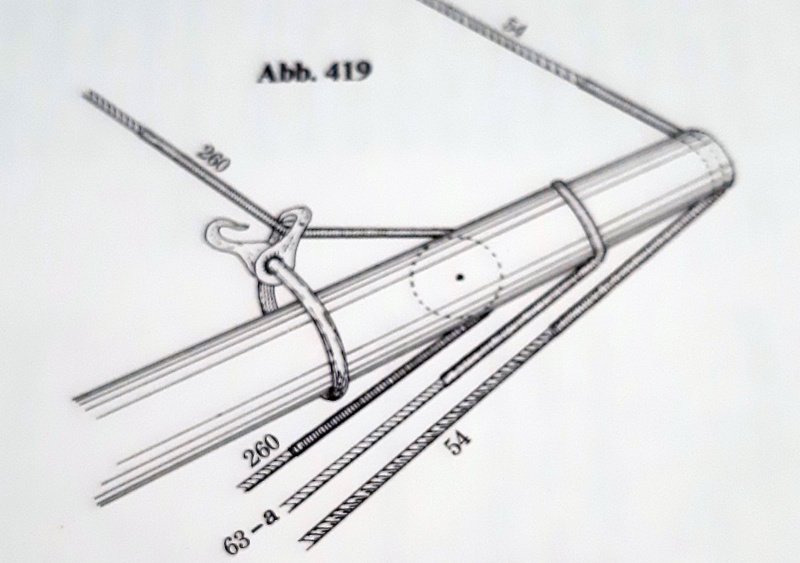
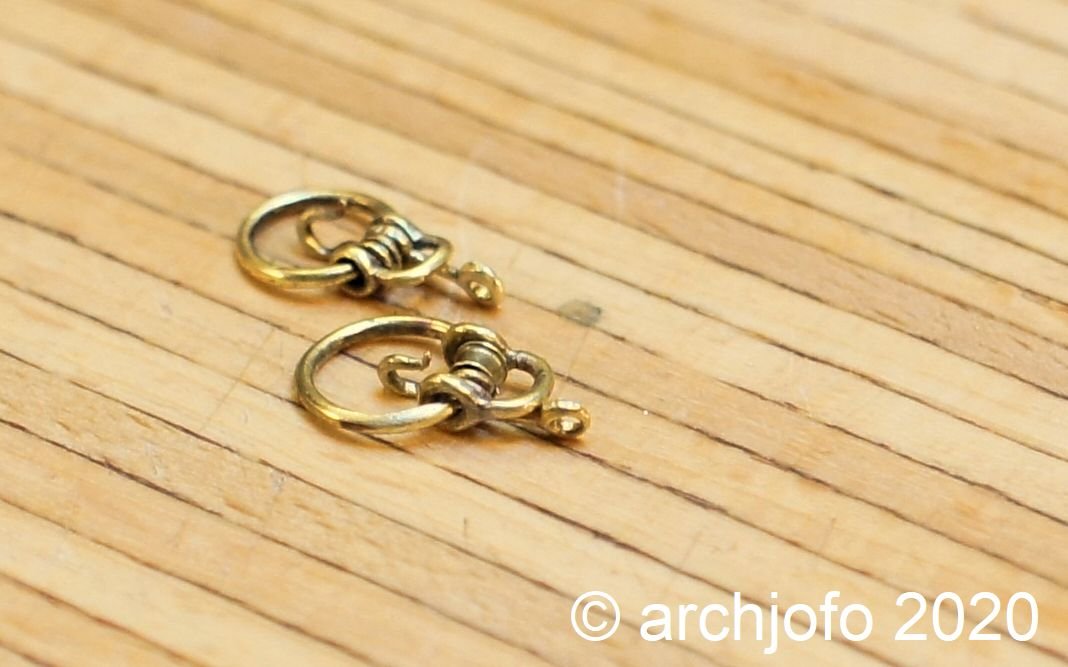
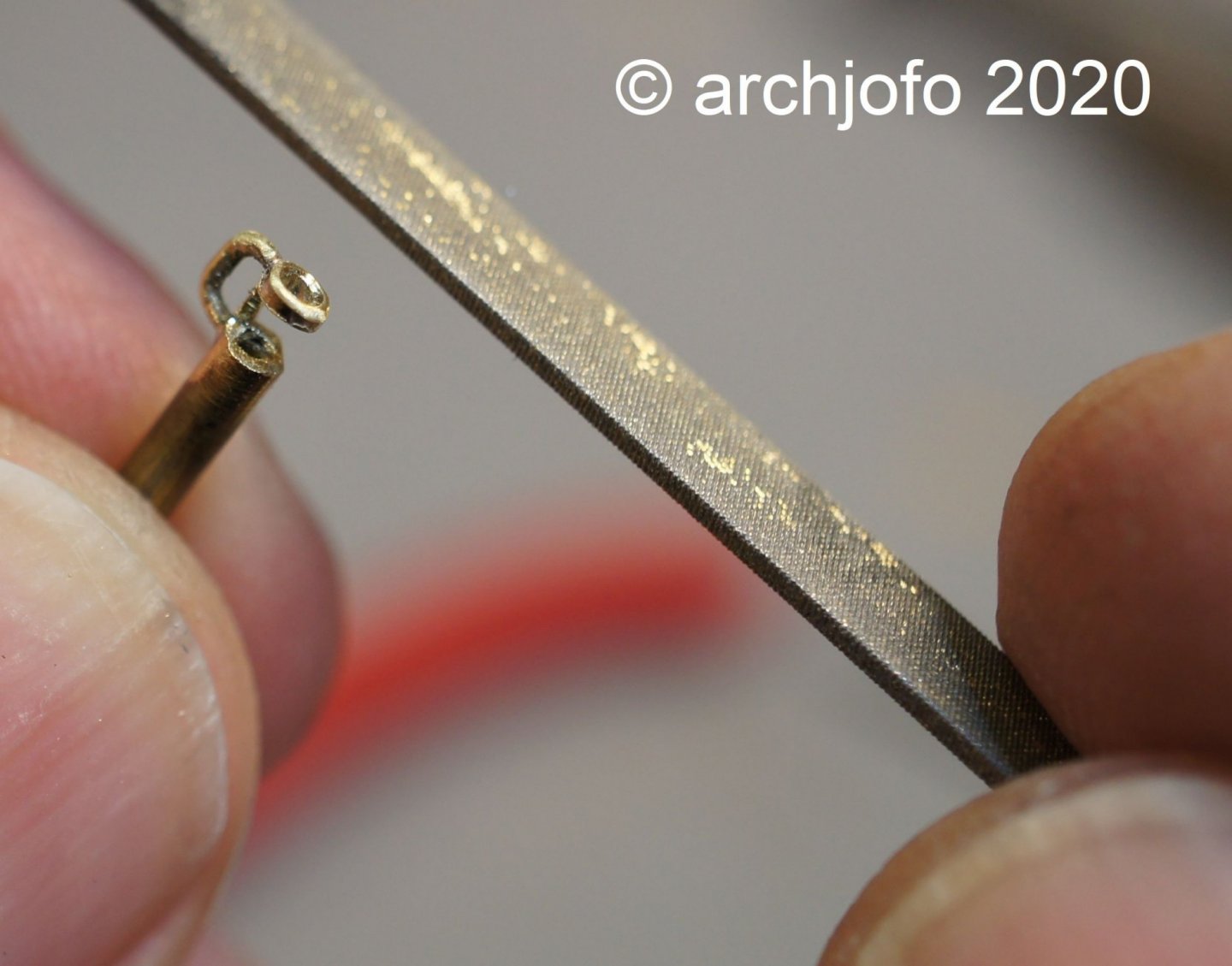
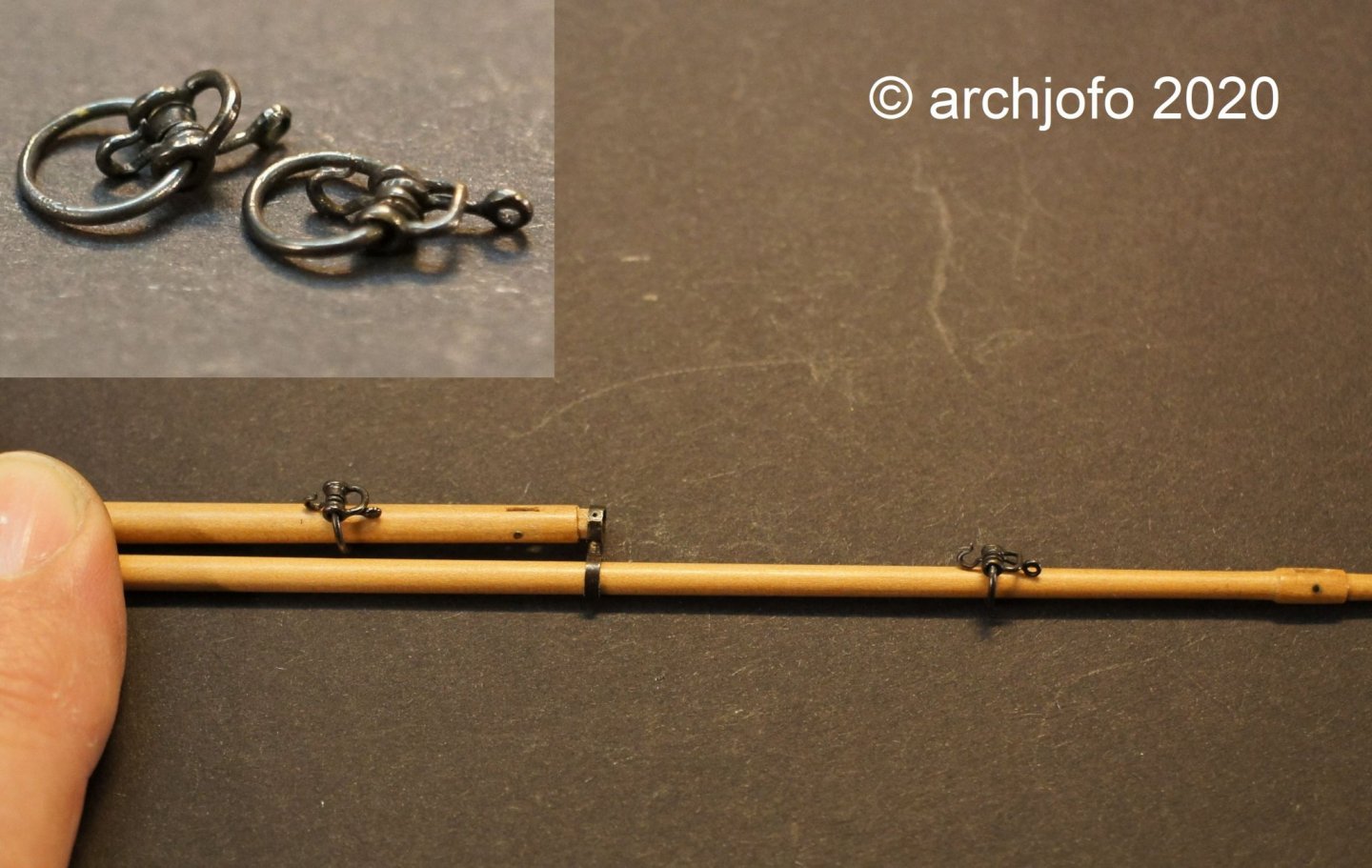
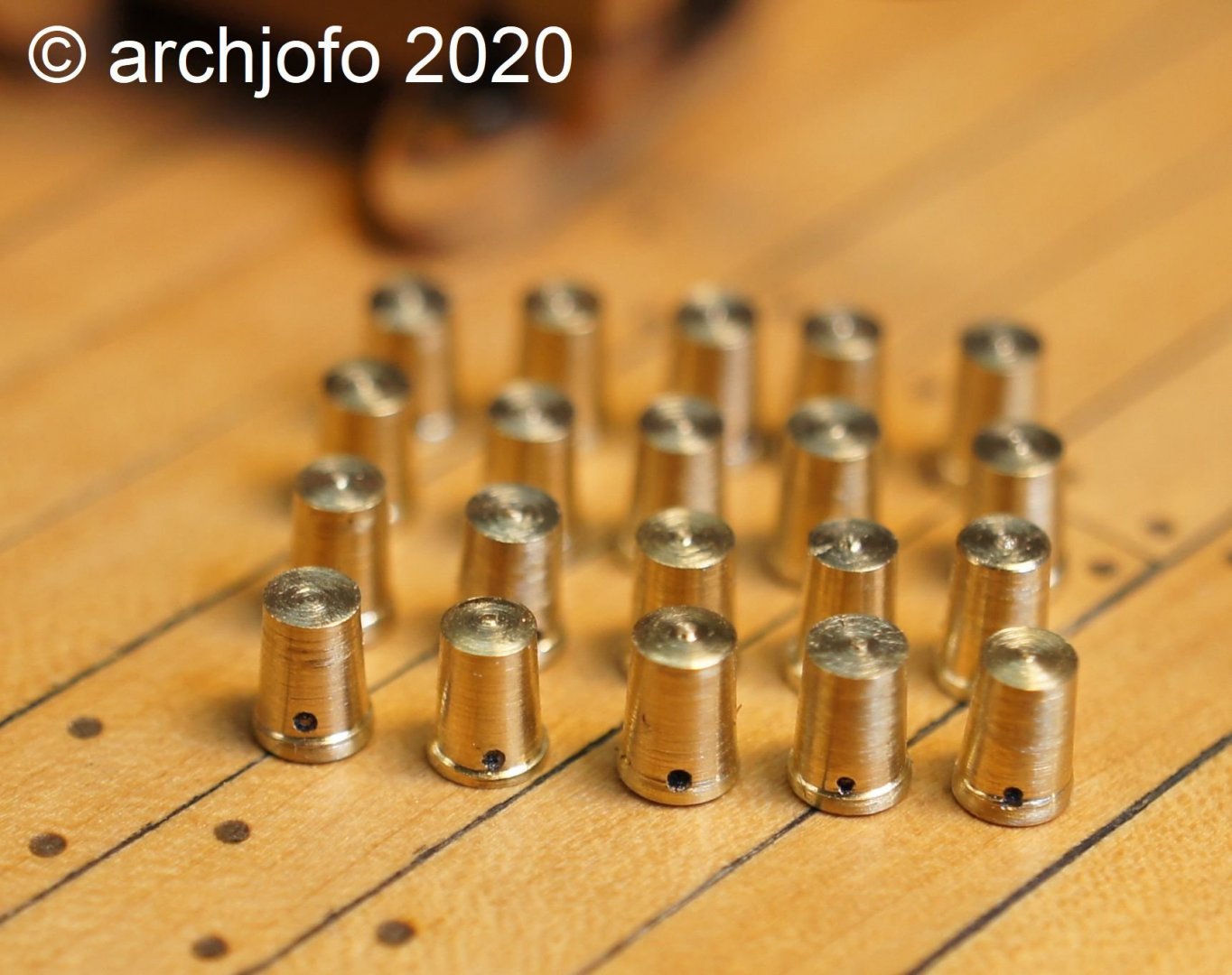
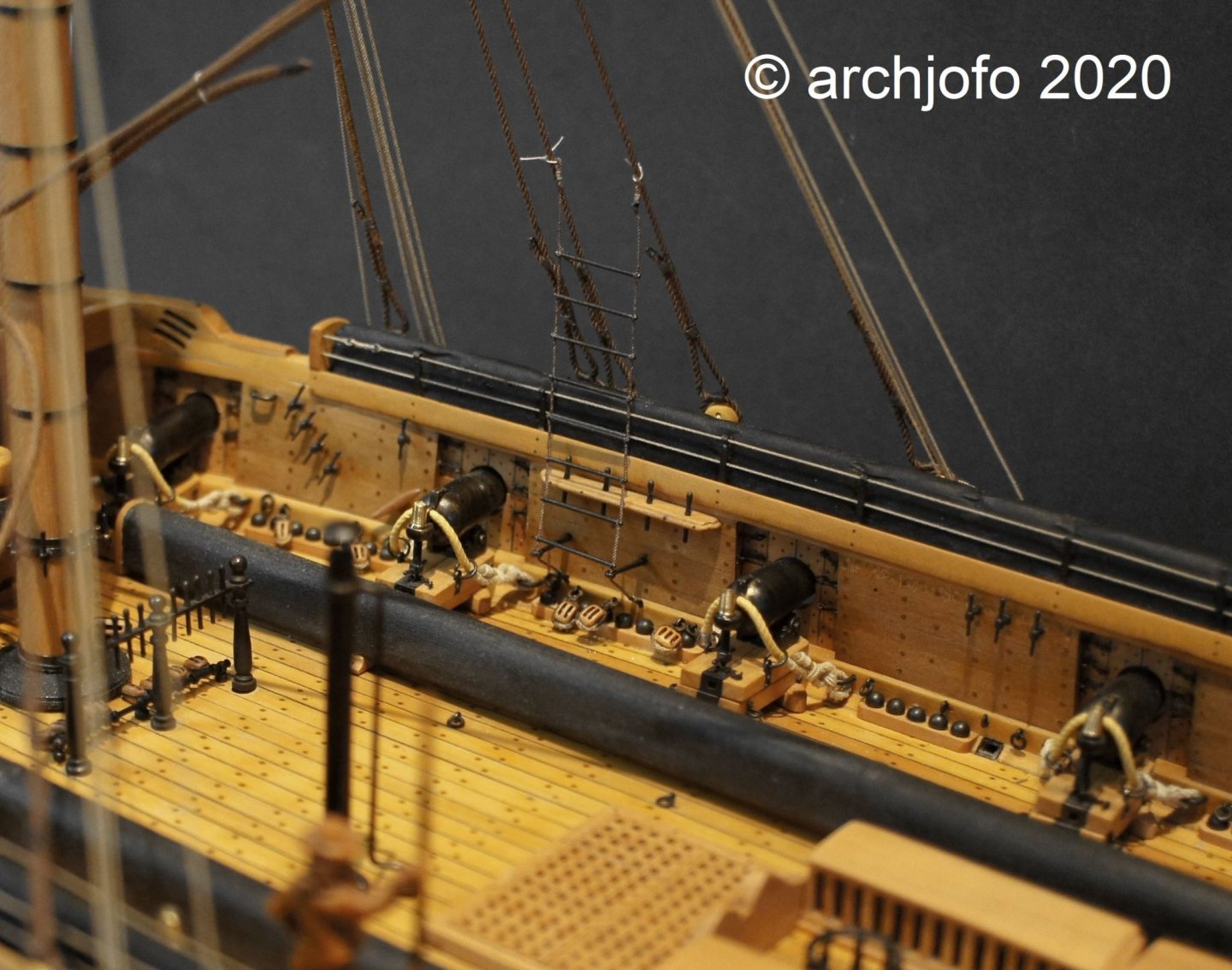
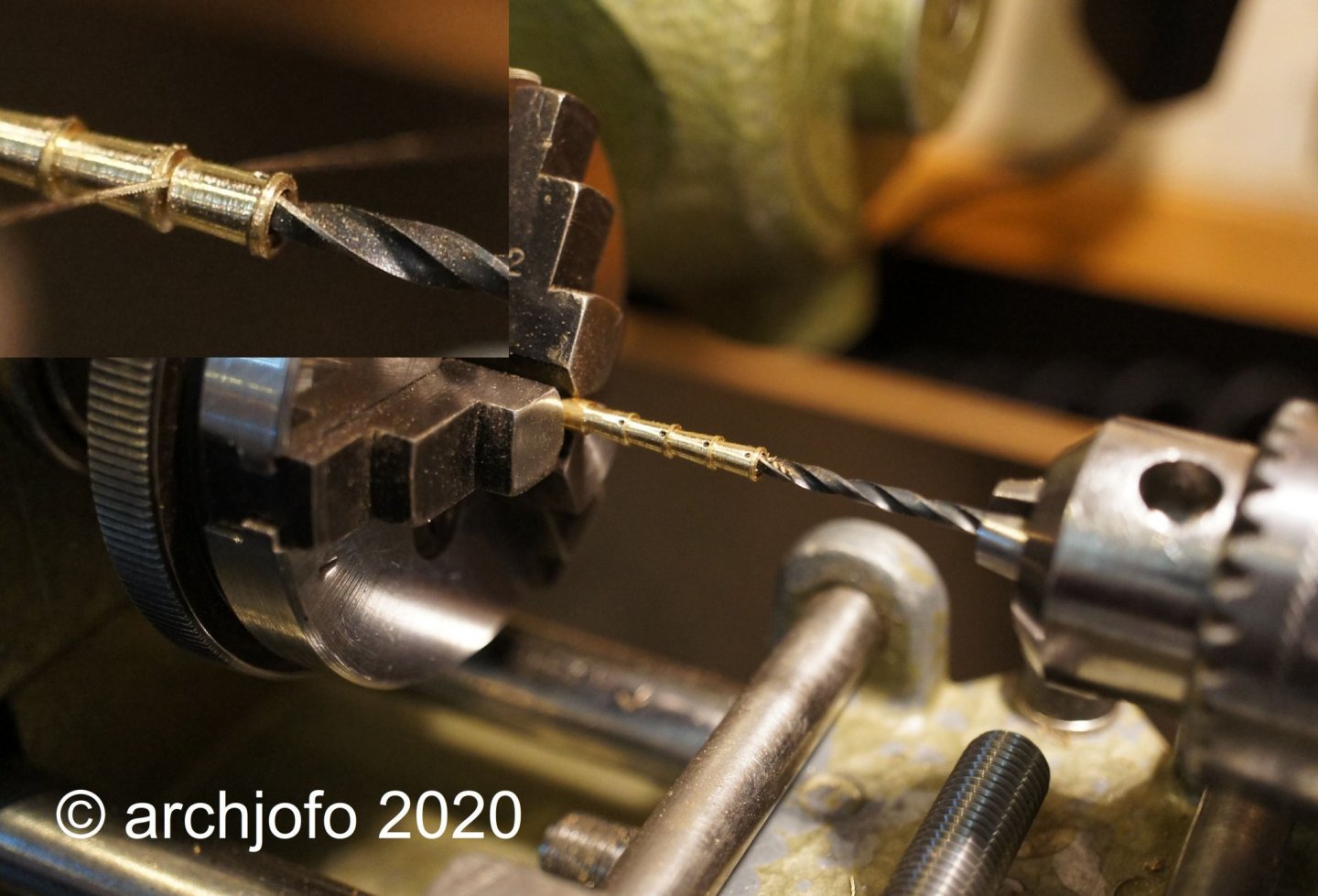
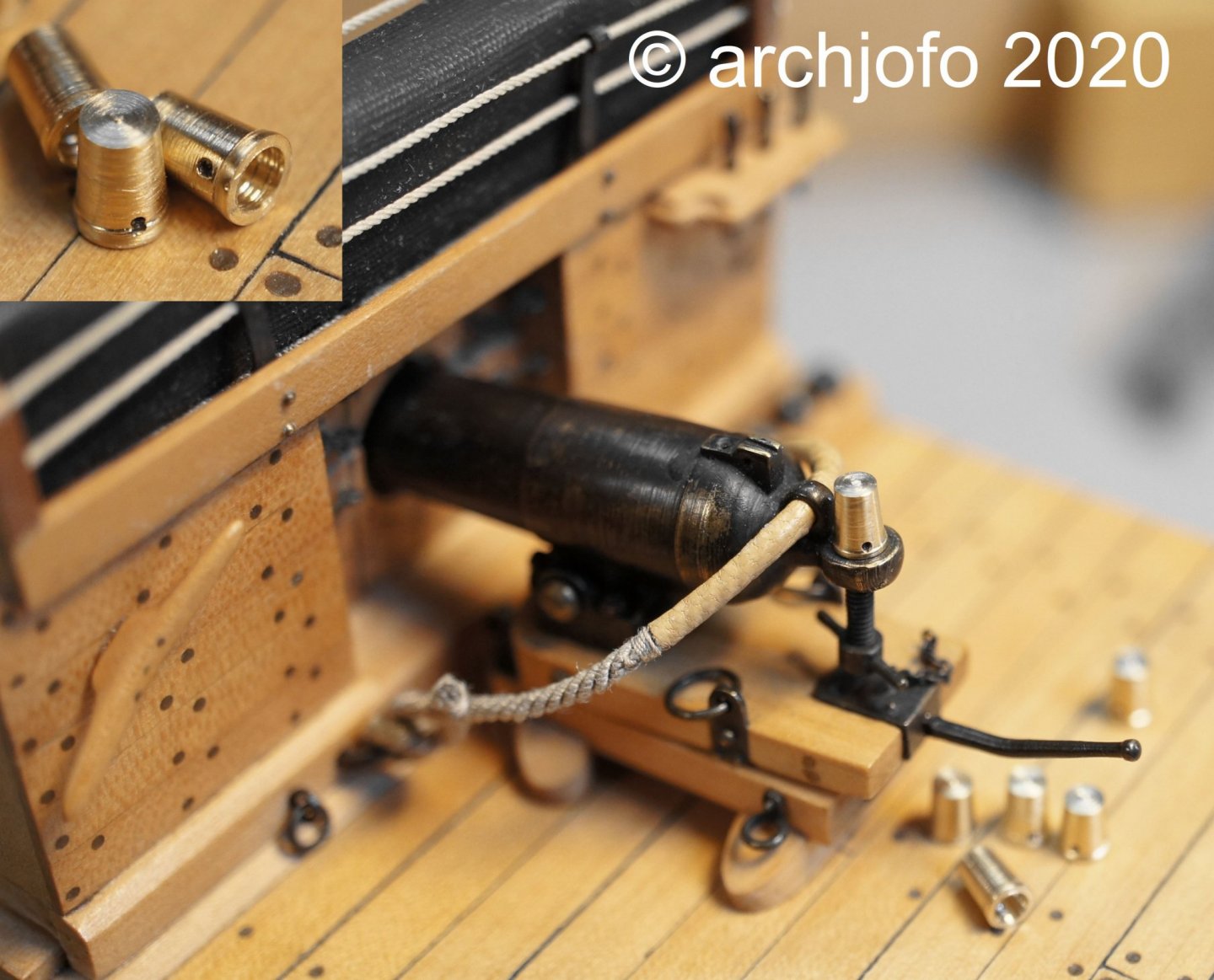
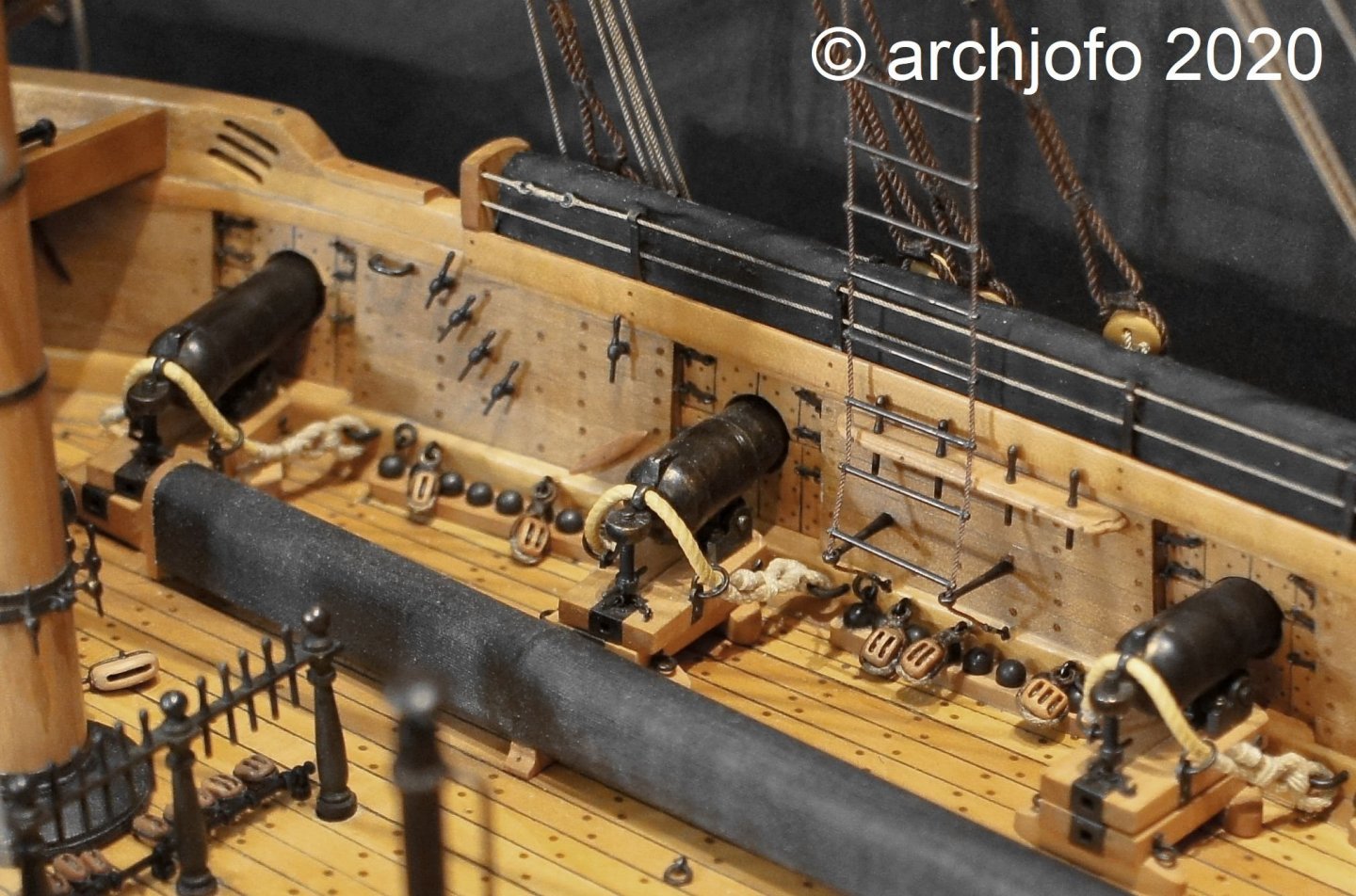
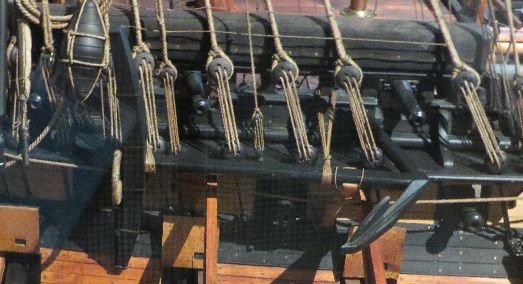
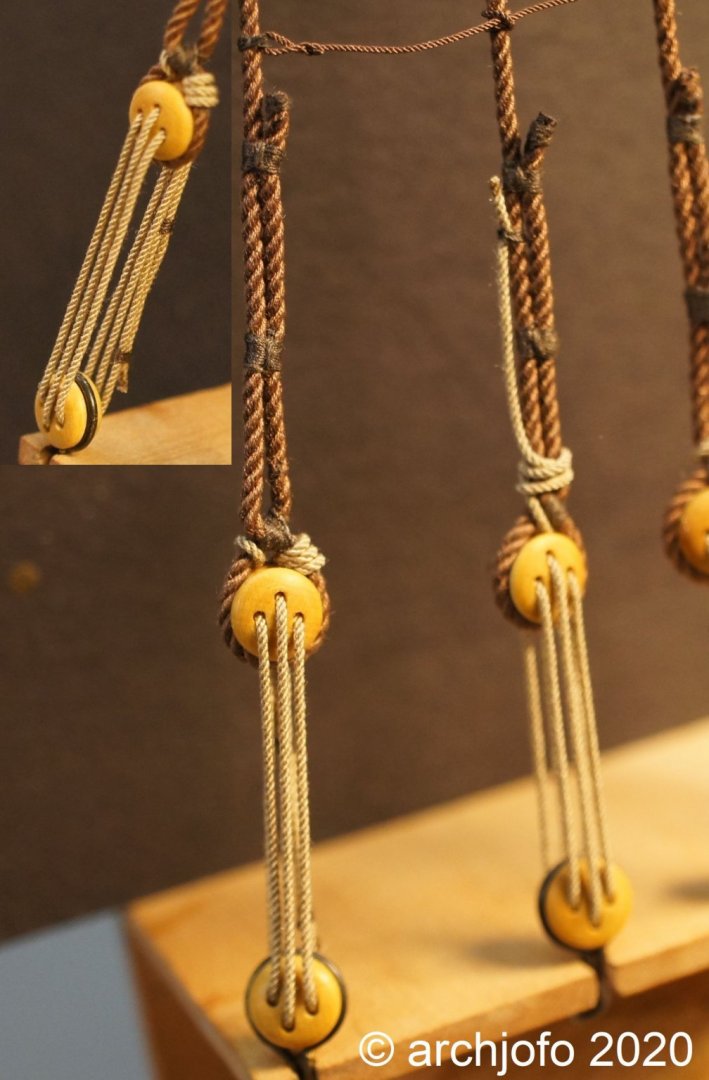
.thumb.jpg.0f891bad5f5faef8aa4edab65100ed17.jpg)
